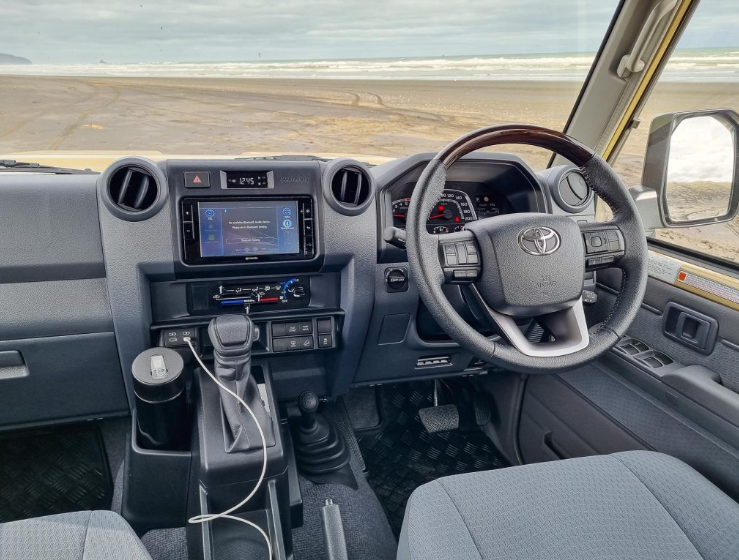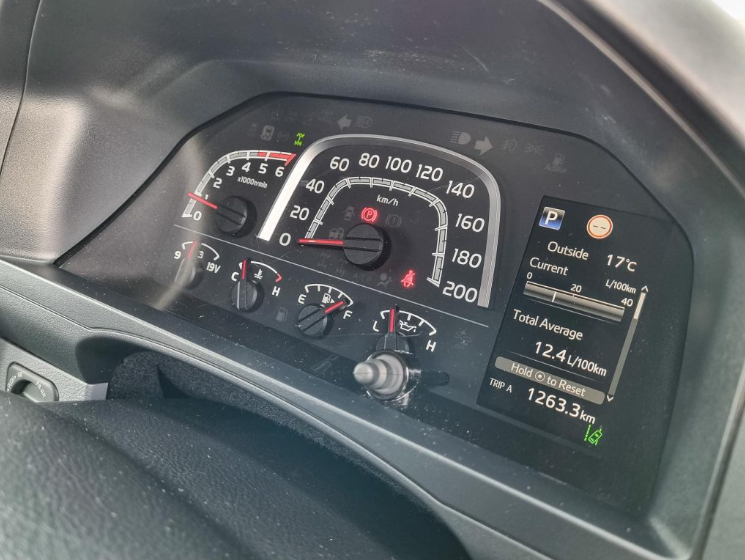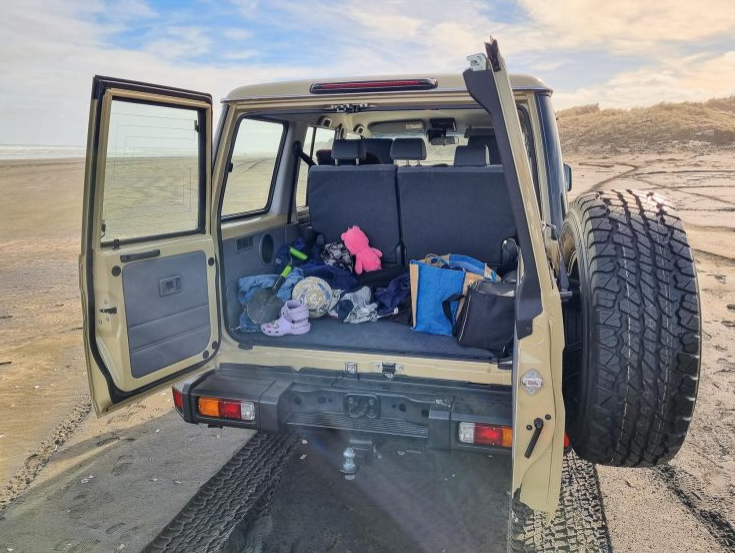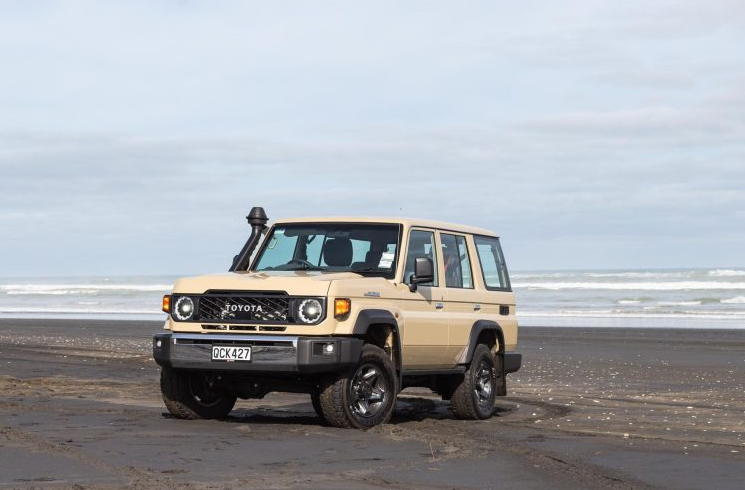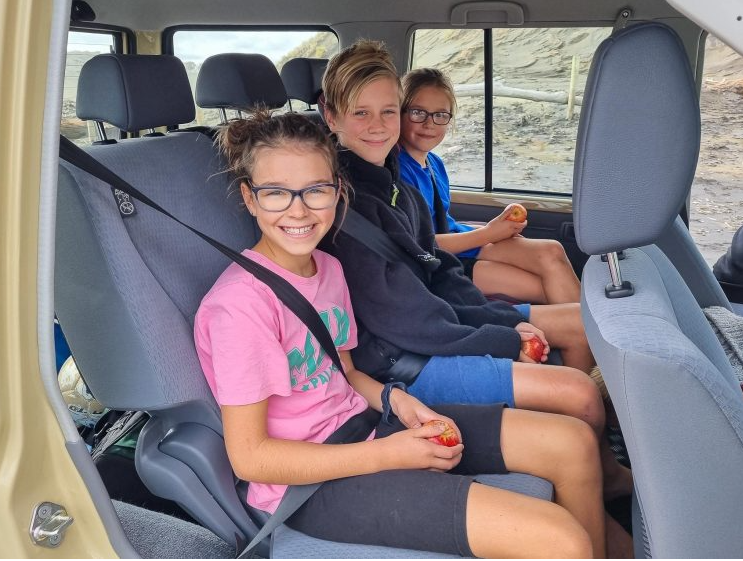2024 Toyota Land Cruiser 70 LX Wagon review
This 70 series wagon harks back to a time before 4x4s were called SUVs

In the shipping news recently was the story of a giant container vessel that cut its emissions by 17 per cent over its usual route thanks to a new technology.
Said vessel wasn’t retrofitted with expensive sails or kites, or running on costly bio fuel.
Instead of sailing full steam ahead, only to end up waiting for days to dock at the busy port (Sail Fast, Then Wait), the crew used a new programme to track the progress of its journey, and arrive at port just in time to dock.
Sailing at a more efficient speed saved the fuel. What has this got to do with the new Land Cruiser 70 wagon? Well apart from having a similarly sized turning circle and a propensity to roll, nothing much really.
But we did note when rushing about the city behind schedule that fuel use of the big truck rose sharply, the trip computer reading in the 15s. The stated average is 10.6L/100km. But that’s what it takes to move a big 2.3 tonne brick of steel when you’re in a hurry.
And that’s despite Toyota’s efforts to curb emissions by replacing the old V8 with the Hilux’s 2.8-litre four cylinder. Swapping an eight for a four sounds bad, but the newer engine makes more torque and is matched with a six-speed auto.
While you can still get a V8 with the cab chassis variants of the LC 70, the new four-cylinder is the only choice for the wagon. This makes 150kW and 500Nm of torque from 1600-2800rpm.
After a few hundred kilometres of more steady-state driving, the average settled in the 12s. So plan your journey, take it easy and you’ll get better mileage. And with the 130L fuel tank, you’ll get well over 1000km of range.
This 70 series wagon harks back to a time before 4x4s were called SUVs, when these were a rare sight in urban areas.
Whereas the cab chassis Land Cruiser LT models are more the dedicated work truck, this is aimed at the ‘they don’t make them like they used to’ set, the ‘make NZ great again’ types.
You can imagine Shane Jones rumbling through native forest in one, running over endangered frogs en route to break ground on a new mine.
Think of this more as a work wagon, as it’s not something you’d actually want to own over, say, a Prado, the new model arriving soon and with the same 3.5 tonne tow rating (finally).
Along with the modernised powertrain, there are a few new bits inside, the steering wheel for instance, which has buttons for some of its newly acquired active safety features.
The lane departure warning beeps at you occasionally but doesn’t interfere with the steering, while the AEB incorporates pedestrian and cycling detection. There are just two air bags and no crash rating.
The audio system has an aftermarket vibe but facilitates smartphone connectivity. There are also a couple of USB-C charge ports. The audio kit sits above some of the heritage components, like the ventilation controls that still do the job as effectively in 2024 as they did in the nineties.
There was a dossier of complaints filed over the week from passengers; there’s nowhere to put anything, it’s hard to get into, the seats are uncomfortable, there’s not much room back here, jeez it’s bumpy.
There’s a three-point seat belt for the middle child but nothing as flash as Isofox points. While legroom is tight for such a large vehicle, there’s a good cargo hold. The rear seats can fold and tumble forward for extra space.
Barn-style back doors, with their 60:40 split, don’t have a strut to keep them open. And with airtight sealing of the cabin, the back door always needs to be slammed shut, otherwise you’ll wonder why the remote locking doesn’t work.
You might buy this for its off-road ability. There’s 290mm of ground clearance and a 33-degree approach angle.
Other hard yakka hardware includes a power mode for hauling, a second gear start for slippery stuff and the switchable four-wheel drive with low-range. Add in locking diffs front and rear.
On road, it’s not so charming. The turning circle is large (12.6m) with lots of wheel twirling required to get it to turn, while the steering feel is vague. The ride is pretty lumpy too, the leaf sprung rear end bouncing around more than the cab chassis version we drove last month.
The double-cab felt more stable, its longer wheelbase helping there, while the wagon also rolls more, especially at the rear.
The four-cylinder turbo makes decent power and the torque is on cue quickly. This is well processed by the auto, so it gets going alright when it needs to. But it’s the torque, made where you need it, that suits this rig well.
Okay, so it’s a bit noisy, with plenty of vibration attached to its performance, but it’s a truck after all.
Like the handling the brakes aren’t great so make sure to maintain a healthy gap to those in front when trailering that big 3.5-tonne load.
At $90,590, those looking for a capable SUV would do better to join the line for the new Land Cruiser Prado, the entry-level model being cheaper to boot.
Those after a work truck are best advised to get the LC 70 cab chassis.
Car Details
Model
Toyota Land Cruiser 70 LX Wagon
Price
$90,590
Engine
2.8L, IL4, TDI
Power
150kW @ 3000-3400rpm
Torque
500Nm @ 1600-2800rpm
Drivetrain
6-speed auto, selectable 4×4
Fuel Use
10.6L/100km
C02 Output
279g/km
Weight
2345kg (claimed)
This article was originally published on autocar.co.nz
Also consider
